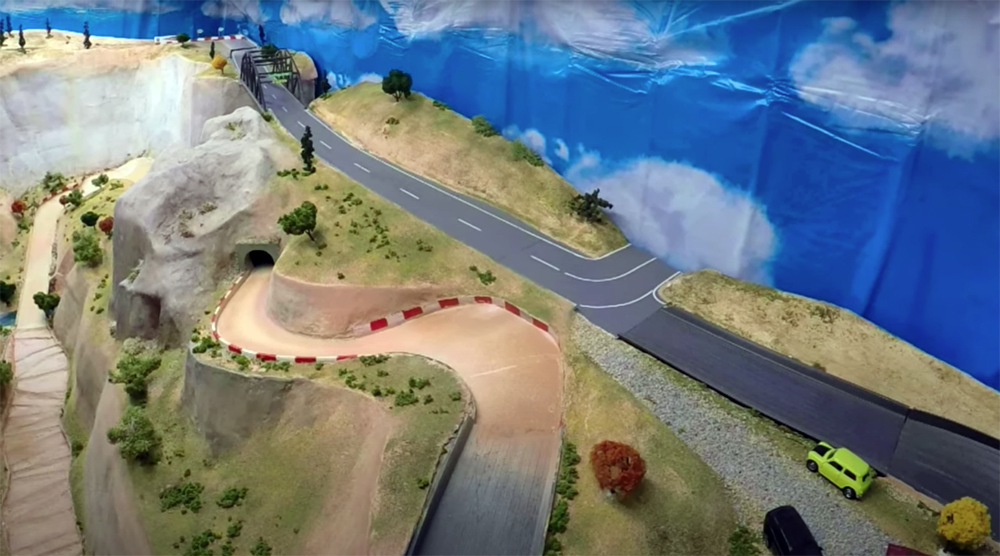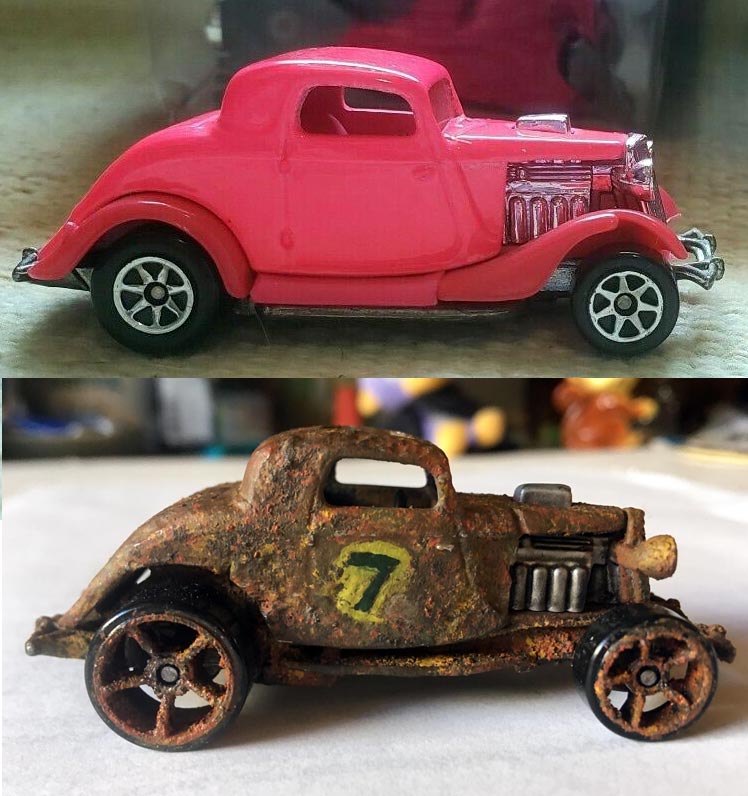I’ve spent the bulk of my life almost completely uninterested in both sports and cars. So it is quite the shock to find myself suddenly and happily embroiled in 1:64 diecast gravity racing.
Oh, I had toy cars as a kid. Hot Wheels, Matchbox, Tootsietoy, AFX, Stompers, etc. I was never really excited by them, though. My brother and cousins, in contrast, were very much burgeoning gearheads. Eagerly collecting and racing both electric slot cars and diecast racers.
While I do have some pleasant memories of those times and toys, I don’t think I would’ve picked them up on my own. In fact, any real interest I had in them dissipated before I left grade school.
Move forward some 40 years and here’s our protagonist, accidentally stumbling across 1:64 diecast racing videos during a slightly inebriated, late night YouTube cruise.
1:64 Diecast Gravity Racing
1:64 diecast gravity racing is nothing more than rolling two or more Hot Wheels style toy cars down a track and seeing which one finishes first. Described that way, it sounds like the kind of diversion that would delight toddlers, vegetables, and few others.
Once bored adults with internet connections get involved in something this elementary, however, the bar gets raised pretty quickly.
As a kid, you have the imagination to envision some pretty incredible tracks but rarely the tools, skills, and cash needed to actually create them. As an adult, the only real hurdle is re-energizing that bright-eyed little bastard inside you, who has all those crazy race track ideas.

Gravity Throttle Racing track layout detail
People not only create long, stable, interesting tracks but also build up realistic, miniature environments around them. Full landscapes with foliage, rocks, valleys, rivers, buildings, spectators, and other cars.
It’s not just the old, orange, single-lane track you remember, either. At least two-thirds of most 1:64 diecast racing tracks are made up of two-car wide, open lane track, allowing the cars to interact, pass, push, and crash into each other, which adds a real element of excitement to the proceedings.
Further, people are modifying the cars to be faster. Taking them apart and replacing the wheels, polishing axles, adding lubrication, weight, and more. There are even diecast racing leagues out there. Track owners who accept modified cars to compete against others on their tracks.
If you’ve not watched a 1:64 diecast racing video before, I highly recommend it. My two personal favorite channels are Gravity Throttle Racing and 3DBotMaker but there are many others to choose from.
An Affordable Hobby … Maybe
After watching quite a few hours of diecast racing, I found myself inflamed with the idea of building a track and modifying my own cars. Never one to hesitate if the goal is pointless fun, I almost immediately began buying Hot Wheels track and cars.
One of the greatest revelations about this hobby for me was that it is damn near affordable. Laughably cheap, in fact. Especially in comparison to the vintage Japanese toy collecting I used to get up to.
Oh, as with anything, you can go down the monetary rabbit hole with Hot Wheels if you wish (or aren’t careful) but, as toy-collecting hobbies go, this one is pretty friendly. Cars currently retail in my area for just a little over $1 and you can get two feet of track for a similar amount. $10 or $20 in and you’ve already got A LOT of fun. That wouldn’t even cover shipping with my old hobby …
After that easy beginning, however, things can start to get a little spendier. It all depends on where and how far you want to take it.
Building A Track and Modifying Cars
The two-car wide, open lane track I mentioned above is taken from the NASCAR Adventure Force Crash Racers set from Far Out Toys. The set sells for around $30 and, though not designed to work with Hot Wheels, makes an awesome addition to almost any 1:64 track. Unfortunately, each set only comes with 4 straights and track pieces aren’t available outside the set (darn it). Consequently, you have to buy multiple Crash Racers sets to get a decent amount of wide, fat track.
Beyond the fat track addition, there are numerous folks out there making 1:64 race track accessories. Adapters, hills, curves, electronic starting gates and finishing lines, decorations, and so much more …
Then there’s modifying the cars. Diecast cars come ready to roll but there’s a lot you can do to make them roll faster, smoother, and farther. Serious racers will need a variety of supplies to take apart, paint, weight, and lubricate their cars for racing.
Then, if you have a track you want folks to send you their cars to race on, you’re going to have to invest in some cameras and some video editing software, plus the skills to use it all.
My own plans include all of the above. I am currently playing with both track layouts and car improvements, with the hope of offering both cars to race and a track to race on. My real dream is an off-road style track, similar to Gravity Throttle Racing’s concept – but with my own random hazards and other features.
That’s a long way off, though. In the meantime, I’m doing my best to get a feel for how it all works together.
Mostly, it’s crashes. Lots and lots of crashes.


[…] 1:64 Diecast Gravity Racing – https://coreyshead.com/blog/2022/07/06/164-diecast-racing/ […]
[…] 1:64 Diecast Gravity Racing – https://coreyshead.com/blog/2022/07/06/164-diecast-racing/ […]